I'm trying to understand what is a typical conductive noise emission of a flyback converter.
I made a simplified model (I skip the transformer replaced with a single coil - I think that this simplification does nothing to noise emission, 300 pF capacitors and 70 mH coils (having 700 mOhms serial resistance) represents normal 100 m (or something) long power line.
After I run the simulation I was surprised to see such HUGE ringing on the power line:
The amplitude is start with 170 Volts and frequency about 500 kHz:
I've never see anything like this in real world circumstances.
I suspect that my simulation model is wrong in some way. But my colleague I was able to consult with told me that it looks OK.
Any thoughts?

